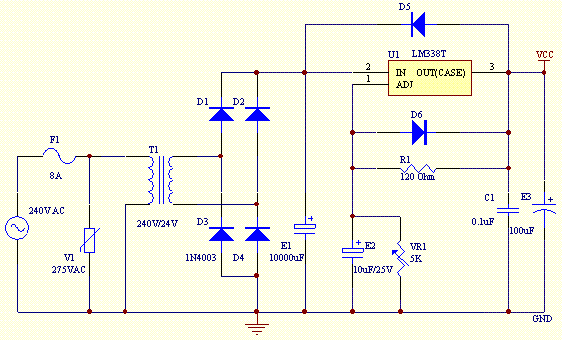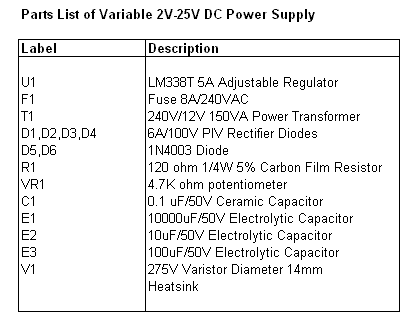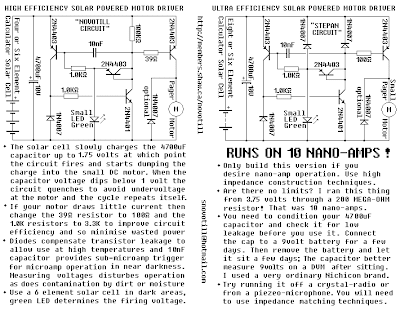Thats the conceptual picture, pretty much devoid of the details. At this point you may be thinking, "Thats too easy" or "Why hasnt this been done before?" While the concept is easy, the execution requires a fairly powerful DSP, as well as a fairly powerful brain trust to program the DSP. On this scale (remember this amp puts out 10,000 watts), it also requires the planar transformers with specific coupling and power characteristics.
The DSP is in complete control of the transformers, running a constant pulse of 24kHz. That doesnt mean the transformers are creating a large 24kHz output signal, but thats the clock speed for the pulse-width modulation. When a signal comes into the DSP, it sends off/on pulses to the transformer switchers of the appropriate duration to create both the frequency and the amplitude of the output. In a pulse width modulation format the length of the pulse will correspond to the output voltage level, and in this amp the length of the pulses will be limited to 1/24,000 of a second. A maximum pulse (100 percent) will result in maximum power output, while a half-length pulse (50 percent) results in half power. At idle, theres zero current going through the transformers, but its still happening at 24kHz.
This is where the amp is like a Class D amp. If the transformer is completely accurate (not possible, by the way) the output will consist of really large squared waves. In reality, the transformer will round these square pulses considerably, plus theres an output filter consisting of a coil and capacitor(s) to finish converting the squared pulses to nice round sine waves. The output filter coils in the Warhorse actually look just like large transformers that would be used in the power supply of a big Class AB amp.
So you now have output signal to feed your speakers, and it should resemble the analog input signal that came into the DSP to start with. The DSP takes feedback from the speaker outputs and makes real-time adjustments to the pulses to create a more accurate reproduction of the original signal, only lots bigger.
There are two separate sets of speaker outputs on the Warhorse, but theyre not parallel. You have to use both of them and you have to use them on a dual voice coil speaker, one output to each coil of the speaker. One set handles the positive side of the wave and the other handles the negative side. The + and - labels on the amp correspond to the labels on the speakers voice coil terminals. At full power this amp is making around 141 volts between 20Hz and 200Hz. Household AC is 120 volts at 60Hz. If you fed the amp with a 60Hz signal, you could probably use it as a backup generator for your house, so dont mess around with the speaker outputs when this amp is on.
Performance
The amp tested as advertised in all respects. The frequency response is exactly 20Hz to 200Hz at the -3dB points, though we used +0/-1dB for the test results. The crossovers and bass boost
![]()
are exact as well, which is a direct result of the signal being handled in the digital domain by the DSP chip. Power at 14.4-volt input exceeded 10 kilowatts by 350 watts-the equivalent of a decent subwoofer amp. While 10,000 watts is pretty impressive, the fact that the WX10000.1 can deliver it with almost 90 percent efficiency is amazing. Class AB amps hover around 50 percent, so this amp can deliver almost twice the output power for any given power input. You can feed two of these amps for the price of one.
There was no indication on the scope of any turn-on or turn-off noise. Who needs a 10,000-watt turn-on pop?
Slew rate and damping factor have been omitted from this test due to the way the amp works and the importance of such specs for an amp of this size. Testing was complicated by the fact that the DSP is instantly responding to the output feedback. The compensation by the DSP resulted in a negative ratio for the damping factor. The precision of the DSP also resulted in a very low slew rate at the output, which corresponded very closely to the actual slope of a wave at 200Hz. In other words, we were only able to measure what the DSP was causing the amp to do, rather than what it might be capable of.
Manual
The owners manual is a pretty comprehensive affair. In fact, I suggest you read the manual before purchasing the amp, just to make sure youre equal to the commitment. The manual is where you learn about having to build an electrical substation to feed the beast. Yes, Im exaggerating but seriously, Kicker recommends no less than eight batteries of 800cca plus two alternators putting out 200 amps each. Thats in addition to the battery and alternator just to run the vehicle. As well, you have to run ought-gauge cable everywhere to boot.
Besides the electrical requirements, and the structural mounting bracket, the manual shows several wiring configurations, and explains the controls clearly. The warranty is three months (consumer installed) or two years when installed by an authorized dealer.
Conclusion
Kicker has managed to break new ground here, and do it in a big way. The Warhorse is
![]()
expensive, but its intended for use in decibel machines and show systems. The retail dollars-to-watts ratio is a pretty high 97 cents, but using this amp will reduce the overall cost of batteries and alternators due to its high efficiency. Check out the Kicker Warhorse van making appearances around the country if you want to experience what this kind of power is all about.













